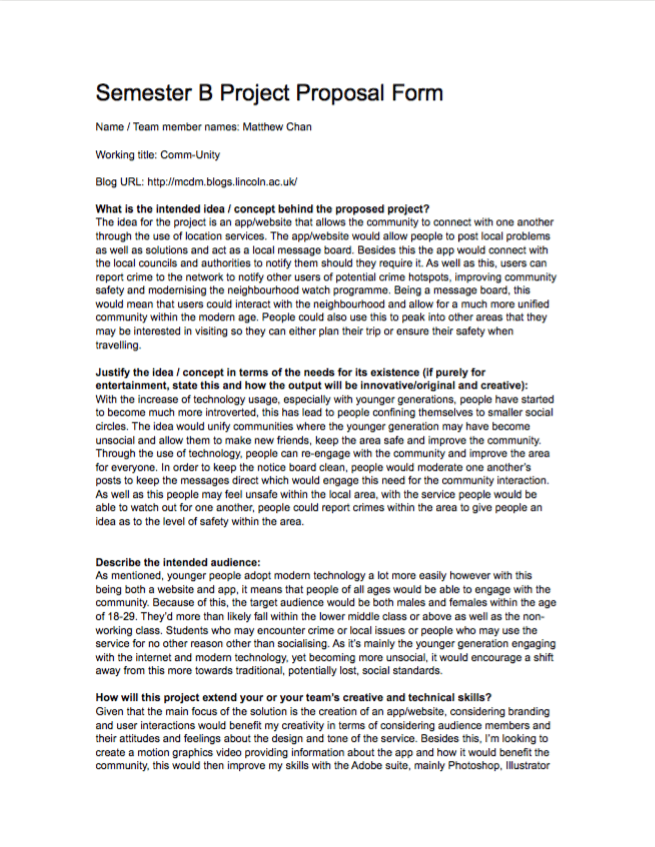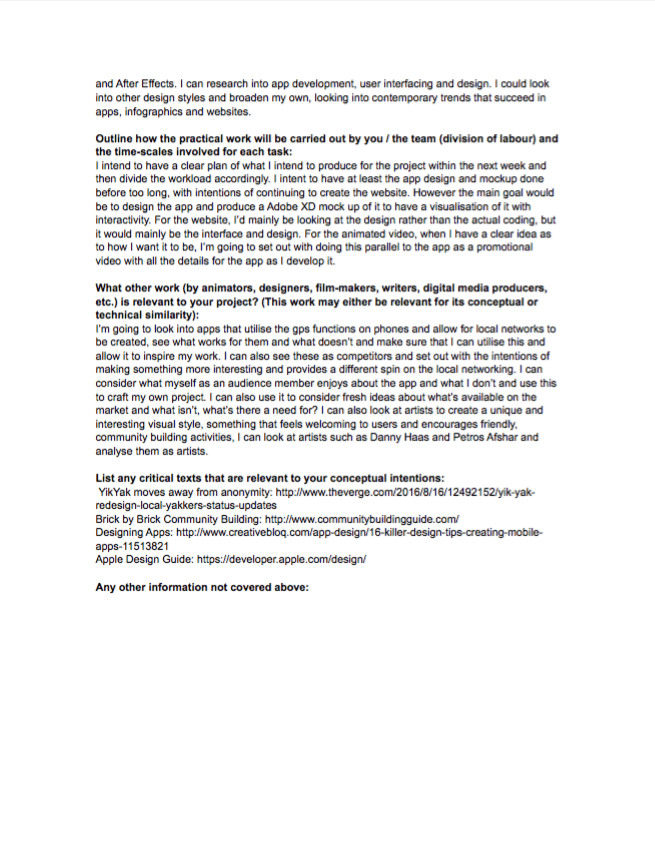This week, I wanted to settle on my idea completely so that it would clear up the rest of my time and allow me to work on the things that need to be done as they need doing. Although my initial idea was something that would encourage active citizenship within the community by allowing people to add notes to a local map so that others would find points of interest or be warned of local crime and dangers. Whilst I still believe this to be a valuable idea, I’ve changed it now. Using nodes known as beacons, business’s, council’s and other entities would be able to join what would be a virtual treasure hunt. The beacon would work by being placed in an accessible position within the location and participants scanning it. With the paired app, would bring up information about the location as well as go towards a total overall score which can be then used to access discounts and bonuses with partnered business’s. People would find these through the location service on their phones which would alert them when they get near. This would also benefit people by encouraging local exploration as well as helping local business. The beacons would be available for purchase, which would then require the business’s to connect to the network of beacons. To prevent over use of the products though, a written reasoning for the purchase would be required. This would bring about more income in local environments where the tax would then be used to improve the area. For the project, I would create a 3D mock-up of the device, a 2D animated video and a mock-up of the app’s interface.
Semester 2: Week 3: Project Proposal
This week we submitted our proposals. Working on this meant that we could focus our ideas and consider how we’d share the idea with others in a much cleaner way. It made us prioritise the important and key ideas regarding the project and focus on getting the idea across clearly as though we were actually pitching the idea to a selection of backers. The questions asked made us consider what exactly we are putting into our projects, what we need to consider with each of the products as well as what we’re neglecting within the project. This also meant we could consider our project time line and how much time we need to allocate to each of the products which would help keep us on track for the semester. This also asked the question: Who inspired us? Whose work should we be looking at for the project? With this, I then began to consider how the products are going to look, how I can craft something graphically that appeals to the target audience. I didn’t settle on a look but I thought of a few ways to keep the design looking clean.
Having already considered certain artists and styles for the branding and interface designs, I was able to narrow my scope and really consider if I was taking on too much of a workload just for the sake of it. This then allowed me to consider how long I have for the project and how long I should delegate to each of the projects including research, conceptualisation and development. Asking questions regarding who I could ask to help with the project allowed me to consider being a bit more ambitious with the project by bringing on fellow collaborators. Having to justify the project felt like it would clear my head and allow me to think about what I specifically want with this project, what I want to make, why it would benefit society etc.
Semester Two: Week 2: Lightning Pitch
In week two, we began to refine our ideas so that they could be pitched to the entire class. This was building on what we did last week and meant that we could gather feedback from the entire group. This let us bounce ideas off of one another as well as hearing what the other members of our group are interested in creating. We could then allow this to inspire our ideas and fuel development within our own ideas as well as receiving feedback about our specific ideas and engaging with others ideas and providing them with the support they need to refine their ideas.
I found that myself and another group member had a startlingly similar idea and so saw this as a reason to craft my idea into something of it’s own rather than being similar to theirs. I also looked at other potential competitors that are already on the market. This gave me reason to innovate rather than follow, making my own path rather than following the one that many others have been on. All of this made me consider the ideas I had for my products as well as how they can be separate from the others and be viewed as something people need. I also began to start conceptualising what I want to get out of the project through the products I create. Creating an app/website interface allows me to consider audience/customer and how they’d engage with the interface and their moods/attitudes towards the interface. As well as this, I had considered a motion graphics video that would act as a motion infographic regarding the app/website and why it’s needed.
Semester Two: Week 1: Padlet
This week, we begun our semester two projects. With this we were tasked with thinking of a problem and solution for it whilst presenting this information through a digital way. This could be anything; an animation displaying information about the problem, an infographic regarding the problem, an app mock up that would provide the solution to the problem. Within the workshop we were told to create a Padlet, a digital moodboard to formulate ideas for the projects. Coming up with problems that everyday member of society encounter. With this we could then think of the solution to it which would then allow us to come up with a digital media product to assist in the presentation of the solution or as the solution itself. With this we then chose our best idea (or two) and pitched them to two other members of the group around the room. From this we could develop our ideas further, getting input from someone who’s only just hearing about it. This also gave us an insight into what certain consumers want as these could be seen as potential audience members for the products.
To start our process we were told to look into the European Youth Awards for some briefs as they provide a category. This then requires entrants to construct a solution to a problem within a category, for example; coming up with a solution that helps bring communities together. Besides this, we were told to think of everyday problems we have and consider how we can solve it or at least handle it. Thinking about this, we could think about expanding it to a larger group of people and thinking about who the target audience is. With this, we could also start to reflect on how the product would be used and how it would develop our skills. It really allowed us to expand on the initial ideas and think about every aspect of it.

